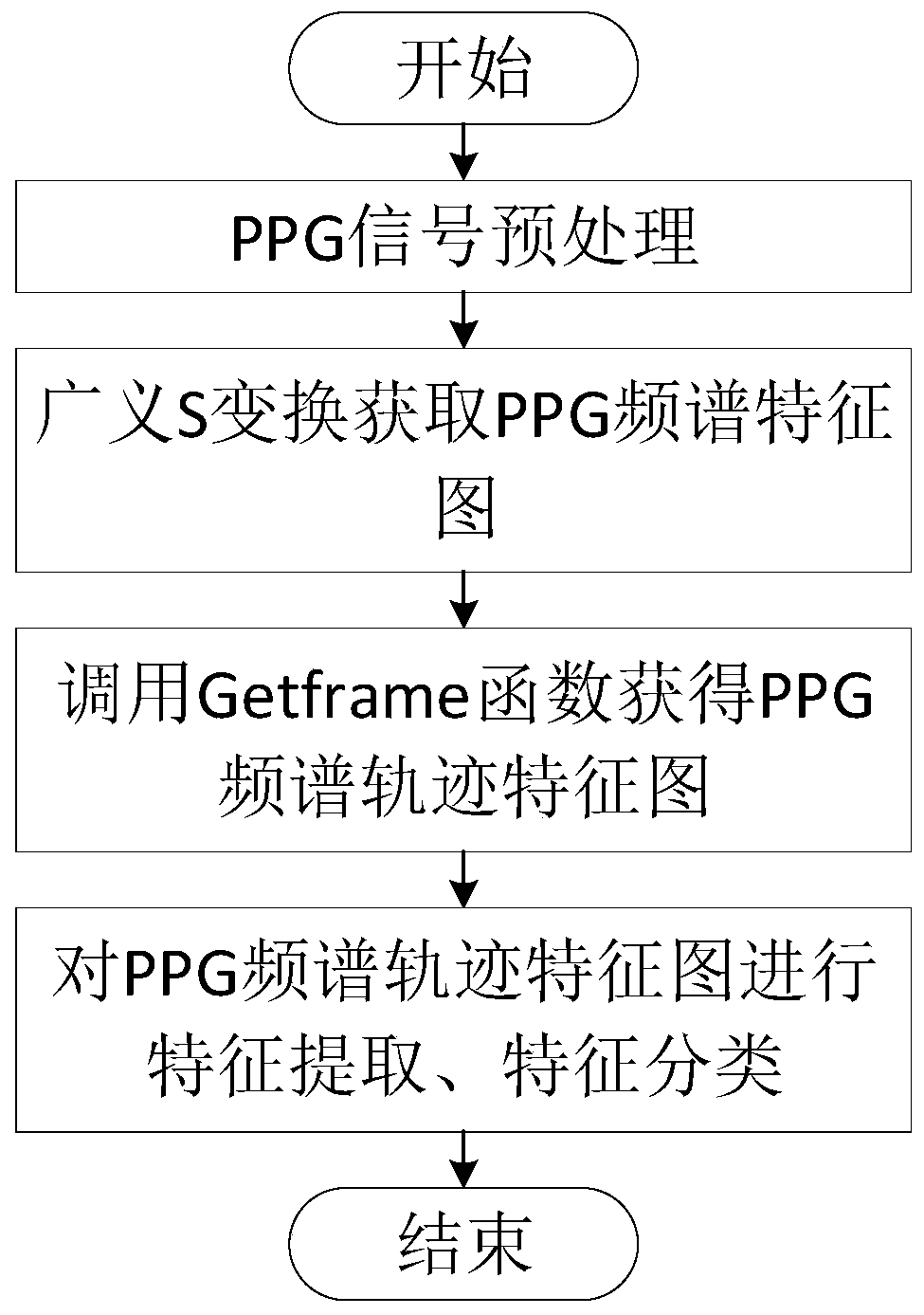Identity recognition method and system based on photoplethysmography
A technology of photoplethysmography and identity recognition, which is applied in the field of identity recognition, can solve problems such as non-promotable, unable to guarantee feature reliability, troublesome process, etc., to avoid feature extraction operations, simplify feature extraction process, and simplify complexity Effect
- Summary
- Abstract
- Description
- Claims
- Application Information
AI Technical Summary
Problems solved by technology
Method used
Image
Examples
Embodiment 1
[0024] This embodiment realizes the identification method based on photoplethysmography.
[0025] Convolutional Neural Networks (CNN) is a type of feed-forward neural network that includes convolution calculations and has a deep structure. It is one of the representative algorithms for deep learning. The convolutional neural network has the ability to learn representations, and can perform translation-invariant classification of input information according to its hierarchical structure, so it is also called "translation-invariant artificial neural network".
[0026] The SoftMax model is a model used to solve multi-classification problems.
[0027] In a multi-layer neural network, there is a functional relationship between the output of the upper layer node and the input of the lower layer node. This function is called the activation function (also known as the activation function). sigmoid and tanh are "saturated activation functions", while ReLU and its variants are "non-sat...
Embodiment 2
[0043] This embodiment implements an identification system based on photoplethysmography.
[0044] attached figure 2 System block diagram of the identification method based on photoplethysmography. Identity recognition system based on photoplethysmography, said system includes data preprocessing program module, generalized S transform program module, Getframe image processing program module, convolutional neural network, said data preprocessing program module, generalized S transform program module, Getframe The image processing program module and the convolutional neural network are sequentially connected. The above-mentioned convolutional neural network includes a convolutional layer, a pooling layer, an activation function layer, and a fully connected layer. The identification method based on photoplethysmography outputs the identification result.
Embodiment 3
[0046] This embodiment realizes the identification method based on photoplethysmography. This embodiment is a specific application of Embodiment 1 and Embodiment 2.
[0047] Please refer to the attached figure 2 . attached figure 2 It is a system block diagram of the identification method based on photoplethysmography in this embodiment, which includes four parts: data preprocessing, generalized S transform, Getframe technology and convolutional neural network.
[0048] Please refer to the attached figure 1 . figure 2 It is a step diagram of the identification method based on photoplethysmography in this embodiment. The data processing flow is as follows: the first step is to input the PPG signal in the time domain for filtering; the second step is to obtain the PPG spectrum characteristic map through the generalized S transform; the third step is to obtain the PPG spectrum trace characteristic map through Getframe; the fourth step is to obtain the PPG spectrum trace ...
PUM
 Login to View More
Login to View More Abstract
Description
Claims
Application Information
 Login to View More
Login to View More - R&D
- Intellectual Property
- Life Sciences
- Materials
- Tech Scout
- Unparalleled Data Quality
- Higher Quality Content
- 60% Fewer Hallucinations
Browse by: Latest US Patents, China's latest patents, Technical Efficacy Thesaurus, Application Domain, Technology Topic, Popular Technical Reports.
© 2025 PatSnap. All rights reserved.Legal|Privacy policy|Modern Slavery Act Transparency Statement|Sitemap|About US| Contact US: help@patsnap.com


